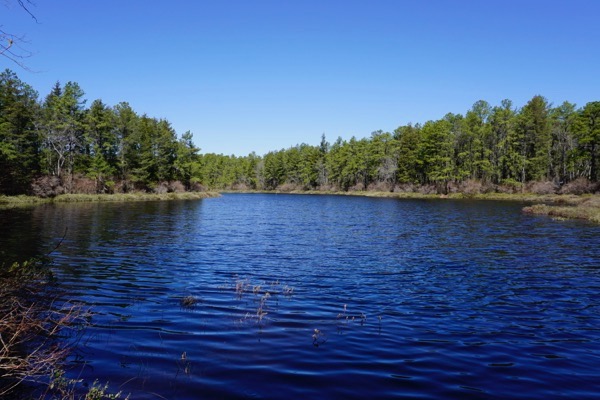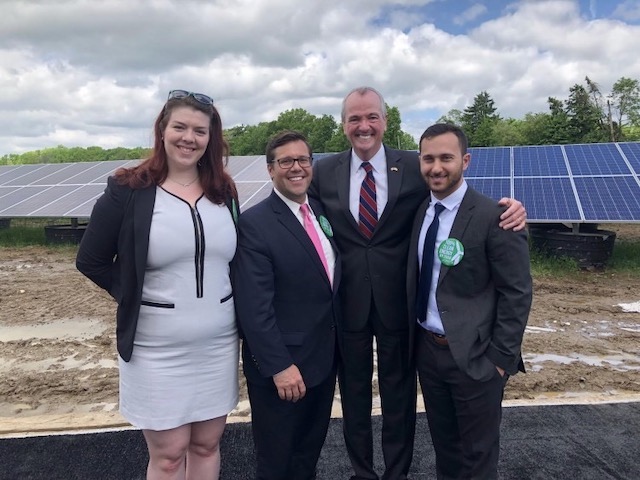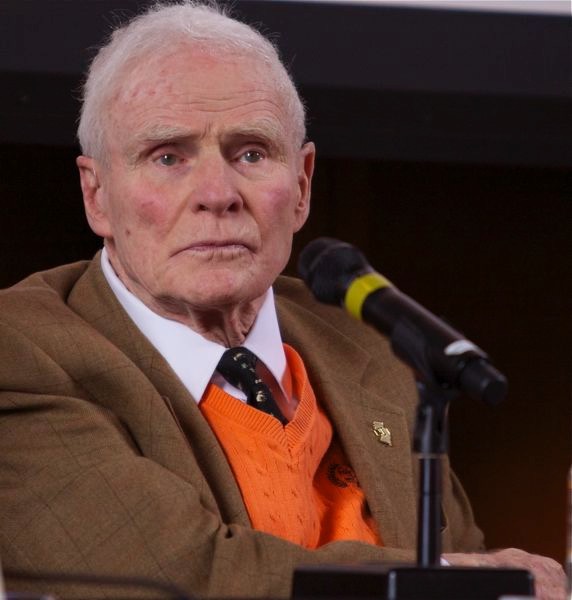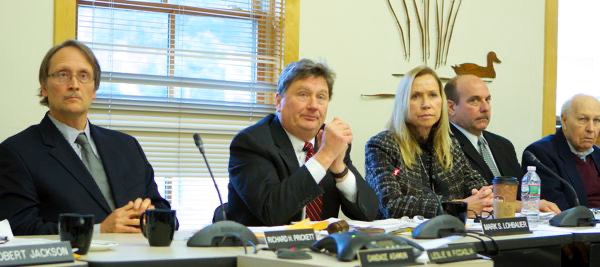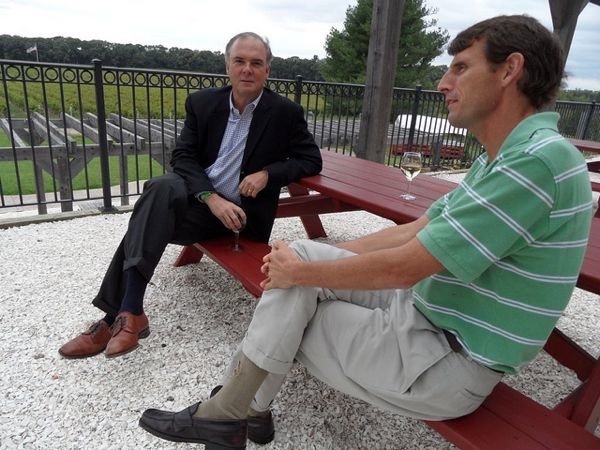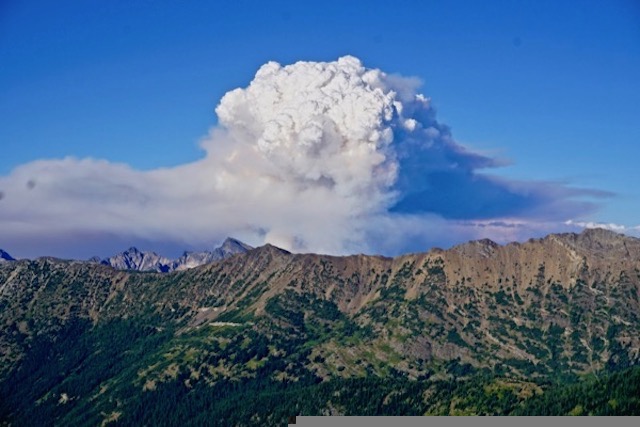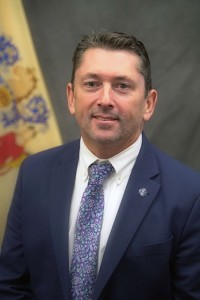NJ League Of Conservation Voters Joins NJ Builders Association In Promoting Pinelands Development
Attack On PDC Program Will Be The Camel’s Nose Under The Tent To Gut CMP
Time For Conservation Community To Rein In Potosnak And Circle The Wagons
“Twenty, 25 years ago, 30 years ago … the towns, many of them did not want to accommodate residential growth,” said Grogan. “That has completely turned around. What we see today are towns begging the commission to allow for more residential growth.” (Asbury Park Press, 1/7/22)
[Update below]
The delicate situation in the ecologically critical NJ Pinelands is spiraling out of control. It could become a death spiral.
Economic and political forces are mounting enormous development pressure on the Pinelands region, and Gov. Murphy – after 4 years of virtually ignoring the Pinelands – just radically upended and weakened an already pro-development Pinelands Commission.
The Gov.’s Pinelands move follows his administration’s support of an economic development plan for the NJ Highlands region, whose authorizing legislation (the Highlands Act) and Regional Master Plan land use plan was based on the Pinelands Act and the Pinelands Comprehensive Management Plan (CMP).
The Governor just appointed a personal political loyalist (Laura Matos, immediately installed as Chair) and a corporate crony (Davon McCurry, with Orsted, the Gov.’s heavily subsidized & Wall Street financed off shore wind developer) on the Commission.
The Gov. terminated reliable conservation votes by the Chairman Richard Prickett and Commissioner Rohan Greene. Two good people just thrown under the bus in order to install the gov.’s political loyalists and corporate cronies. Disgusting. No good deed goes unpunished (and the conservation community didn’t even fight for them).
That move comes at a time when the Commission is seeking a new Executive Director after the unexpected death of Nancy Wittenberg. The Gov.’s move exacerbated the prior 7 – 4 County appointee pro-development voting block on the Commission to a 9-3 pro-development slant.
At the same time, the conservation community – who are supposed to serve as an advocate for preservation and watchdog on the Commission – just completely collapsed, fragmented, cut a dirty deal, and actually supported the Gov.’s move.
Asbury Park Press reporter Amanda Oglesby recently wrote a good overview piece, that sets the stage and outlines what’s at stake, see:
Oglesby quotes Carleton Montgomery, Director of the Pinelands Preservation Alliance, at length on the ecological and water resource values provided by the Pinelands forests and why the Pinelands Commission is so important.
But, while not really surprised given his political corruption in support of Gov. Murphy, I was shocked by how Olgesby then quoted Ed Potosnak of the NJ League of Conservation Voters (NJ LCV) at length, concurring with the NJ Builders Association:
Though [Acting Executive Director] Grogan says the credit system is a success, New Jersey builders think otherwise. Jeff Kolakowski, CEO of the New Jersey Builders Association, said the credit system has added “unnecessary costs to the production of housing” around the Pinelands and has failed to work as it was originally intended.
“Regardless of whether you are building a 1,000-square-foot apartment or a 10,000-square-foot mansion, the price of PDCs (Pinelands Development Credits) are the same on every unit of housing, which in turn serves as a disincentive to more compact development,” Kolakowski said in an emailed statement. “Further complicating the matter is that PDCs are scarce and in high demand, which resulted in the price of PDCs more than doubling since last year.”
It’s a concern he shares with environmentalists, who also say new nominees to the Pinelands Commission need to address the issue.
“What we want to see is denser development in the growth zones, because it reduces the (suburban) sprawl and has a smaller environmental impact,” said Ed Potosnak, executive director of the New Jersey League of Conservation Voters. “The existing system actually disincentivizes this kind of development so you have things like six-acre zoning. The houses are further apart, which means you need longer roads and longer water systems and sewer pipes, and you are cutting down more trees.”
Potosnak wants Pinelands rules to favor more dense housing surrounded by open space.
“We can provide, through the Pinelands Commission, even more incentive by changing the way the credits work, that folks can get more credit if they do some of these things we think are better for the environment and actually better aligned with what … prospective homeowners are looking for.”
Whoa! WTF? Are you kidding me?
Is Potosnak now a real estate agent? (“aligned with what … prospective homeowners are looking for.”)
The man knows nothing about land use planning or the Pinelands CMP. (And, while I’ve been out of State for several years, I’ve never seen him at a Pinelands Commission meeting and am not aware of anything NJ LCV has ever done in the Pinelands to promote preservation). (a reliable longtime Pinelands advocate just wrote to tell me that Potosnak has never been to a Pinelands Commission meeting. How is he possibly now a spokesman for “environmentalists?”).
Potosnak’s statements are ill-informed, politically dangerous, and flat out false (it will take several posts to explain why).
On top of that, it is abundantly clear that he is a political whore for Gov. Murphy and is committed to supporting Gov. Murphy’s tools the Gov. just installed at the Pinelands Commission and their policy agenda.
And on top of all that, Potosnak is concurring with the NJ Builders Association on flaws with and need to revise the CMP to promote denser development and “reform” the Pinelands Development Credit (PDC) system.
I am no fan of trading schemes like the PDC program, because they are designed to promote growth, are a form of privatization that restricts public involvement, and because the designated growth areas are often poorly planned and allow far too much growth (and climate issues and ecological water limits were never considered).
It is obvious that the NJ Builders Association game plan is to focus on”reforms” to the PDC program and that will serve as the camel’s nose under the tent to gut the CMP. Ed Potosnak is either a dupe or a whore – or both.
Opening the dood to any CMP amendments to promote growth under the current economic and political conditions would be a disaster.
We should not even be talking about more growth.
The conservation agenda for the Pinelands needs to focus on adopting CMP amendments to address the climate emergency, restrict water use to protect ecological functions, restrict destruction by ORV’s, and regulate endocrine disrupting chemicals.
To slow this train down, I sent the following email to Carleton Montgomery, who sits on the NJ LCV Board and has the power to rein him in: Potosnak can not possibly become the voice of the conservation community in the Pinelands (or anywhere else):
Carleton – You are on the Board of NJ LCV.
I was disgusted by the role NJ LCV played in supporting Gov. Murphy’s nominees (he also undermined PPA’s position, which I also did not support)..
Now, I read in the Asbury Park Press that Ed Potosnak is speaking on Pines land use issues and agreeing with the NJ Builders Association? WTF? see:
You must rein Potosnak in. We are in dangerous times. Suggest you folks circle the wagon and do something publicly to slow this train down.
Wolfe
We’ll keep you posted –
I’m highly skeptical of any engagement, and note that the NJ LCV Board is stacked with other lame, well fed fellow Foundation funded, Murphy sycophants, including Tom Gilbert, NJCF and Julia Somers of the Highlands Coalition. They have not only been Murphy cheerleaders, but have not objected to the Gov.’s Highlands economic development initiative.
[Update: 1/18/22 – Carleton Montgomery of PPA writes to tell me that I got it all wrong:
The point that development in the regional growth areas should be higher density than it has been to date is one PPA has advocated for many years. That means, among other things, changing the incentive structure built into the PDC requirements so they do not dis-incentivize higher density. The very low density development that has marked almost all residential development in the growth areas just uses the limited growth area land inefficiently, while causing just as much habitat and water loss as would higher densities on the same land areas – something the Commission’s science program found long ago to be the case.
To rebut his ideas about density in the growth areas and the risks of opening the CMP right now, I responded thusly:
So, you would support opening the CMP to amendments regarding managing growth in the growth areas?
Do you think that is a wise stance right now, given the recent changes on the Commission and the development pressures?
I disagree with your characterization of low density land use as “inefficient” – what exactly is your optimization objective to define “efficiency”? Revenue per square foot? Lower per acre site improvement and infrastructure costs to the developer?
I have not reviewed the science program report, so if you could send a link, I’d appreciate it.
Aside from all that, if you are not troubled by the role of NJ LCV in recent events – a concern I raised that you ignore – I would strongly differ.
If you are concerned with habitat and water loss (recharge? consumptive use?), perhaps you might want to shrink the growth area boundaries and allowable growth in them and focus on setting the long overdue ecological based water allocation restrictions.
That might be a far more protective approach than supporting higher densities.
